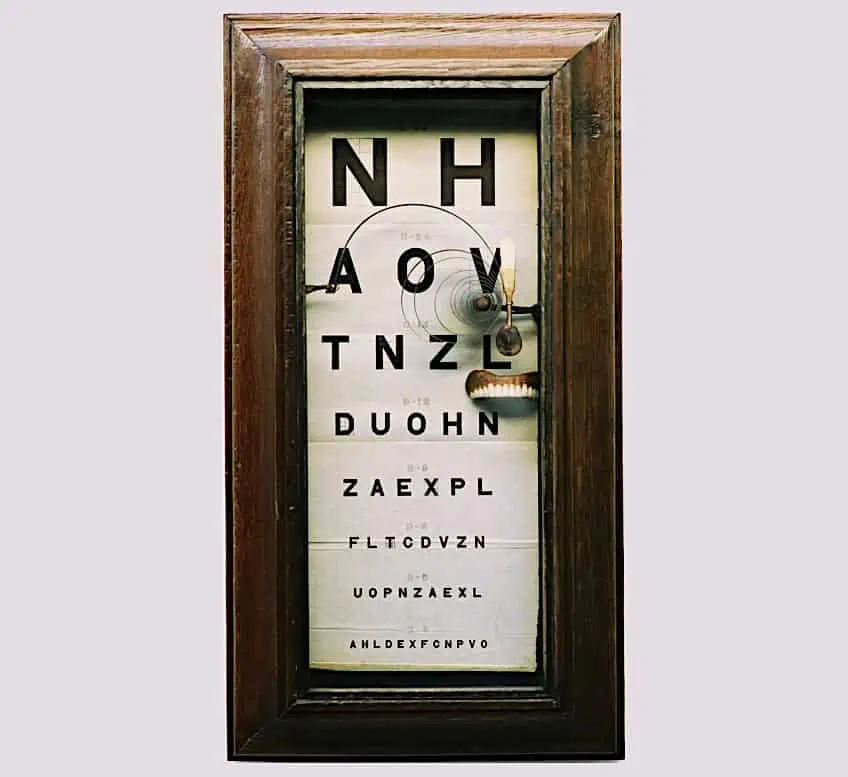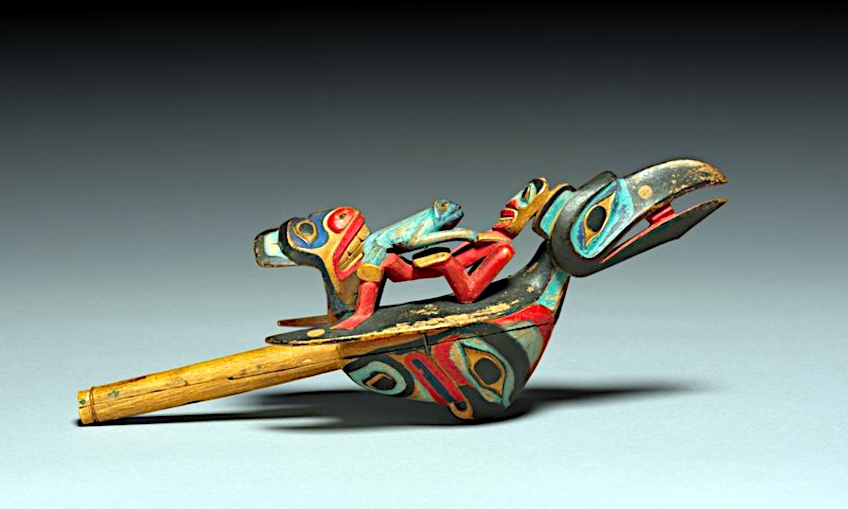Fine Art Definition – What Makes Something an Artwork?
This post may contain affiliate links. We may earn a small commission from purchases made through them, at no additional cost to you.
Art is something that encompasses a large variety of creative activities. Every human has the capacity to create images and objects. The purpose of the item and skill with which it was made establishes the distinctions between fine arts, commercial arts, crafts, and other forms of creative expression. A dizzying array of imagery, objects and activities are now considered to rank amongst the fine arts. As a result, many people are understandably confused by what makes one object a highly valuable artistic masterpiece, while another seemingly similar object is considered either craft, applied art, or commercial art. In this article we will define what is meant by the term “fine art”.
Table of Contents
What Is Fine Art?
All forms of art can be considered an expression of creativity, however, there are different levels of vision and skill involved in the different forms of art. Fine arts have changed over the years, becoming more inclusive. In the post Renaissance period a distinction between different types of art developed, but the incorporation of everyday items, materials, and imagery into fine art during Modernism has blurred the lines between art and everyday life.
 Vorwarts! (Go Forward!) 1897 by Jeff Wassmann (contemporary artist acting as fictional historical artist Johann Dieter Wassmann) (2003); Jeff Wassmann, CC BY 3.0, via Wikimedia Commons
Vorwarts! (Go Forward!) 1897 by Jeff Wassmann (contemporary artist acting as fictional historical artist Johann Dieter Wassmann) (2003); Jeff Wassmann, CC BY 3.0, via Wikimedia Commons
What distinguishes contemporary fine art from applied art, commercial art, and craft is the conceptual element. The idea underlying an artwork has become the driving force in the visual arts, to the extent that an artist’s intent and the manner in which virtually anything from an unmade bed to a flickering lightbulb is presented by an artist as an artwork has become the primary means of defining art.
Art can now be defined as a process, where an artist aims to makes the audience aware of the manner in which they see and try to interpret an object, image, environment, or orchestrated spectacle. Fine arts, in particular, are made for conceptual, and expressive purposes and is primarily a visual artform, although the use of performance and installation in Contemporary art means that other senses are not necessarily excluded. Commercial and applied arts are created largely for advertising or aesthetic reasons, and are used for promotional purposes, to provide decorative pieces for interior or environmental design, or the more functional items of industrial and product design.
 Hotel Marqués de Riscal designed by Frank O. Gehry; David Mapletoft, CC BY 2.0, via Wikimedia Commons
Hotel Marqués de Riscal designed by Frank O. Gehry; David Mapletoft, CC BY 2.0, via Wikimedia Commons
Visual fine arts encompass drawing, painting, sculpture, assemblage, printmaking, installation, performance, video, photography, land art, and so on. Traditionally music, poetry, and architecture were also described as fine arts. In the modern period, the scale and complexity of buildings meant that architecture increasingly leant towards engineering. The growing emphasis on concept over technique in art diverged from the increased practical skills and knowledge of materials that architects require to design and oversee the construction of complex structures.
That said, many contemporary architects are moving away from pure functionalism, incorporating significant artistry and conceptualism in their designs.
Fine Art Meaning
There are some cultural differences when distinguishing between fine art and applied art. For the most part, globally and historically there was no distinction between artforms as art was created to serve very clearly prescribed ritual, cultural, or personal functions.
As these objects and images were meant to be used or displayed within specific contexts, they had to conform to set stylistic and symbolic models.
In Western or European traditions that developed from the Renaissance onwards, artists began to create artworks for purposes of personal expression and theoretical or conceptual exploration. This is art for its own sake. For this reason Western art distinguishes between fine art and decorative or applied art. The latter has some form of practical application, such as pottery, jewelry, designer furnishings, and so on.
 Haida Rattle from the Northwest coast of North America (early 1900’s); Cleveland Museum of Art, CC0, via Wikimedia Commons
Haida Rattle from the Northwest coast of North America (early 1900’s); Cleveland Museum of Art, CC0, via Wikimedia Commons
Historically the distinction between fine art and applied art emerged from changes in social structures. During the Renaissance, artists inspired by Humanist ideas began to venture into philosophy, mathematics, and other more theoretical fields. The result was that over time, painters who could work without getting dirty were able to present themselves as educated gentlemen, while sculptors who shared their theoretical expertise, but worked in dusty workshops occupied a slightly lower rank. Craftsmen by contrast, were relegated to the working or professional class.
Artists were contracted to serve specific patrons for whom they not only created artworks, but performed a variety of duties ranging from designing costumes for festivals, machines for warfare, or drawing up architectural plans as well. Until the emergence during the 17th century Dutch Golden Age of a powerful merchant class, who showed their wealth by displaying art, artworks were primarily commissioned by the church and the nobility.
With the creation of an art market, artists such as Johannes Vermeer (1632 – 1675) no longer needed to serve noble or religious patrons and could create artwork that reflected their artistic interests independently.
In some cases, where you think a famous piece is a fine art piece in the modern understanding of the term, it technically is not. For example, the Sistine Chapel frescoes (1508 – 1512) by Michelangelo (1475 – 1564). This is because this piece was commissioned by Pope Julius II for a specific religious context and purpose. The subject-matter, and design was the result of a negotiation between artist and patron and the unique symbolic and practical requirements of the location. Contemporary understandings of fine art refer more to works such as Starry Night (1889) by Vincent van Gogh (1853 – 1890), where the artist had no restrictions or criteria set by a client to consider.
 View of the Sistine Chapel showing the Last Judgement and The Book of Genesis by Michelangelo (1508 – 1512); Antoine Taveneaux, CC BY-SA 3.0, via Wikimedia Commons
View of the Sistine Chapel showing the Last Judgement and The Book of Genesis by Michelangelo (1508 – 1512); Antoine Taveneaux, CC BY-SA 3.0, via Wikimedia Commons
Traditionally, decorative artists like weavers, carpenters, and ceramicists, have been known as “craftsmen” and not artists. The title of “artist” was more for painters, sculptors, and architects. This distinction has not always been in place. Up to and during most of the Renaissance, many of the greatest artists also produced functional pieces. In the late 19th and early 20th Century, movements such as the Arts and Crafts movement sought to bring the skills of traditional crafts back into the fine arts.
Today, fine art is something that is mostly produced for an audience versed in the ideas surrounding art, leading some to describe contemporary art as similar to a type of religion with its own temples, priestly class, rituals, and scripture. Since it is more exceptional and more in demand, fine art usually also has a much higher price tag than applied arts and remains amongst best-performing financial investments.
During the 20th century artists began to blur the lines between decorative, commercial, and fine art. These artforms use a combination of art forms, which includes the use of “fine art” and employs “lower” art techniques as well. One example is pop art, which uses decorative as well as commercial techniques but is considered fine art. For example, Andy Warhol’s silkscreen creations.
 Dropped Cone by Claes Oldenburg and Coosje van Bruggen (2001); © Raimond Spekking
Dropped Cone by Claes Oldenburg and Coosje van Bruggen (2001); © Raimond Spekking
Anyone with the aptitude to become an artist can undertake a course of study at various institutions. For the visual arts, the emphasis at these schools on technique and immersion in traditional forms of art varies greatly, but at least at the introductory level, most students are still exposed to sculpting, drawing, painting, printmaking, and photography. Once a student graduates, they can follow a traditional route, explore Contemporary artforms, or branch out into the commercial art industry. For architecture and literature, students will generally enroll a course of study in architecture or languages.
While no qualification is mandatory to create visual art, music, or poetry, architects must be properly trained and will require a degree before they are allowed to practice.
Fine Art Examples
In the past, only five types of fine art were recognized. These included drawing, painting, sculpture, music, architecture, and poetry. Drawings can include pencils, pens, ink, charcoal, chalk, and pastels. Paintings can include oil, watercolors, tempera, ink, gouache, and acrylics. Sculpting can involve stone, bronze, and wood carvings. This list has grown to include a few more art forms, which also now fall under the fine arts category.
Printmaking and Other Fine Art Examples
Printmaking can include engraving, etching, woodcuts, lithography, as well as silkscreen painting. While printmaking began as a commercial enterprise focusing largely on books and leaflets, the mastery of printmaking techniques by artists such as Albrecht Dürer (1471 – 1528) and William Hogarth (1697 -1764) located it firmly within the fine art sphere. In contemporary art, artist William Kentridge (1955 -) combines traditional printmaking techniques with animation, video, and traditional performance genres like opera.
Within its contemporary context, film, photography, animation, calligraphy, and a host of other forms of artistry have been co-opted into the fine arts. As a result, even such informal and temporary forms of visual expression as graffiti are now considered examples of fine art. But only when produced by artists with clear artistic and conceptual intent.
 Banksy Graffiti depicting the Gray ghost covering a stick figure in New Orleans 2008; Mark Gstohl, CC BY 2.0, via Wikimedia Commons
Banksy Graffiti depicting the Gray ghost covering a stick figure in New Orleans 2008; Mark Gstohl, CC BY 2.0, via Wikimedia Commons
Some Fine Artists to Consider
There are many famous fine artists, and many of them used different mediums. Since there are too many artists to name, we have only provided a short list of those who are considered to be fine artists. You should recognize most of these artists below.
- Leonardo da Vinci (1452 – 1519)
- Artemisia Gentileschi (1593 – 1653)
- Rembrandt Harmenszoon van Rijn (1606 – 1669)
- Edgar Degas (1834 – 1917)
- Claude Monet (1840 – 1926)
- Mary Stevenson Cassatt (1844 – 1926)
- Vincent van Gogh (1853 – 1890)
- Henri Matisse (1869 – 1954)
- Pablo Picasso (1881 – 1973)
- Frida Kahlo (1907 – 1954)
- Joseph Beuys (1921 – 1986)
 Monument to the Stag by Joseph Beuys; (between 1958 and 1985); © Marie-Lan Nguyen / Wikimedia Commons
Monument to the Stag by Joseph Beuys; (between 1958 and 1985); © Marie-Lan Nguyen / Wikimedia Commons
Fine art paintings and other traditional forms of fine art are still displayed and enjoyed throughout the world today. The only thing that has changed is that the category of fine art now comprises a broad range of formats and genres that would be unimaginable to artists of the recent past, but strangely familiar to the craftsmen who created the objects and created the spaces used for rituals, social events, and cultural ceremonies.
Frequently Asked Questions
What Is Fine Art?
Fine art has been around for many years and traditionally, it includes well-known art forms like drawing, painting, sculpture, poetry, music, and architecture. Fine art is considered to be a visual art that is valued for its aesthetic appeal and incorporates a conceptual and/or expressive component. Fine art does not have a practical or commercial purpose, even though it may ascribed commercial value or be used for practical purposes (such as advertising, investment, decoration, and so on).
Is Photography a Fine Art?
Traditionally, photography was never considered to be part of fine art. However, it is categorized as fine art today. To create photographs that can be classified as fine art, make sure to be more creative and put more thought into your photo choices. Wolfgang Tillmans is an example of a famous German fine arts photographer, who has a diverse collection of works and is quite influential in his field.
What Is the Difference Between Fine Art and Decorative Art?
The main difference between the two is that fine art is the visual expression of an emotion and/or a concept, while decorative art pieces are primarily functional and may also hold symbolic meaning. For example, a pottery bowl would be considered a form of decorative art.
In 2005, Charlene completed her wellness degrees in therapeutic aromatherapy and reflexology at the International School of Reflexology and Meridian Therapy. She worked for a company offering corporate wellness programs for several years before opening her own therapy practice. In 2015, she was asked by a digital marketer friend to join her company as a content creator, and it was here that she discovered her enthusiasm for writing. Since entering the world of content creation, she has gained a lot of experience over the years writing about various topics such as beauty, health, wellness, travel, crafting, and much more. Due to various circumstances, she had to give up her therapy practice and now works as a freelance writer. Since she is a very creative person and as a balance to writing likes to be active in various areas of art and crafts, the activity at acrylgiessen.com is perfect for her to contribute their knowledge and experience in various creative topics.
Learn more about Charlene Lewis and about us.







